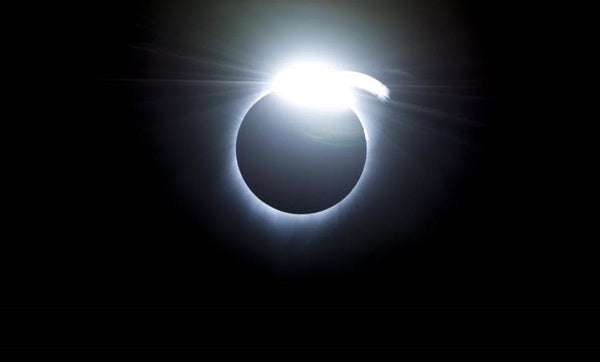
This Was Accidentally Spotted During Hybrid Solar Eclipse
Share
Nature never ceases to amaze us with its extraordinary celestial displays, and the recent hybrid solar eclipse witnessed above Australia was no exception. A group of talented astrophotographers seized the opportunity to capture a breathtaking image of this rare astronomical phenomenon. The photograph not only showcases the ethereal beauty of the sun's corona but also captures a faint glimpse of a magnificent eruption of magnetized plasma, known as a coronal mass ejection (CME). Let us delve into the details of this remarkable event and the captivating image that encapsulates its grandeur.
The Unique Hybrid Solar Eclipse
Taking place on April 20, the hybrid solar eclipse stood out due to its dual nature. It encompassed two separate types of eclipses occurring simultaneously: the total solar eclipse and the annular solar eclipse. While the total solar eclipse presented a fleeting yet complete occultation of the sun, the annular solar eclipse offered a longer but partial eclipse, revealing a halo of plasma encircling the moon. The visibility of each eclipse depended on the observer's location, with only a fortunate few able to witness the total solar eclipse. For most people, the annular eclipse was the highlight of the event. Notably, this was the first hybrid eclipse in over a decade, adding to its allure.
The Astonishing Composite Image

The awe-inspiring photograph is a composite of hundreds of images captured by accomplished Czech astrophotographers Petr Horálek, Josef Kujal, and Milan Hlaváč. Positioned at Pebble Beach in New South Wales, Australia, they skillfully combined their shots to create a single image. The composite picture showcases the pinnacle of the total solar eclipse, known as totality, during which the sun's corona was fully visible for approximately one minute. However, what the human eye could perceive pales in comparison to the mesmerizing details revealed in this composite image, as affirmed by Petr Horálek himself.
An Unexpected Marvel

The Coronal Mass Ejection (CME): While hoping to capture the sun's corona during the eclipse, the astrophotographers stumbled upon an unforeseen spectacle—the eruption of a coronal mass ejection (CME) emanating from the sun. Though barely visible in their image, when overlaid with a coronagraph taken by NASA's Solar and Heliospheric Observatory, the CME becomes strikingly apparent. This unexpected discovery not only adds further intrigue to the image but also serves as evidence of the sun's heightened activity as it approaches the peak of its 11-year cycle, known as the solar maximum.
A Glimpse of the "Diamond Ring"
The image also immortalizes the iconic phenomenon known as the "diamond ring." As totality concludes, the sun begins to emerge from behind the moon, resulting in a dazzling display reminiscent of a brilliant diamond ring. The image perfectly captures this evanescent moment, infusing it with a touch of celestial enchantment.
Earthrise and the Moon's Shadow

Interestingly, the effects of the hybrid solar eclipse were not confined to Earth alone. Japan's Hakuto-R lunar lander, despite meeting an unfortunate fate of crashing into the lunar surface during its landing attempt on April 26, managed to capture a captivating "Earthrise" image. This photograph, taken from the moon's perspective, portrays our planet partially concealed by the shadow of the moon. Australia appears as a prominent, dark patch on the Earth's surface, further accentuating the eclipse's impact.
You’ve come this far…
Why not venture a little further into A.S.S. - our exclusive Australian Space Society.
And keep thrusting Australia into the deep unknown…
#Space_Aus




